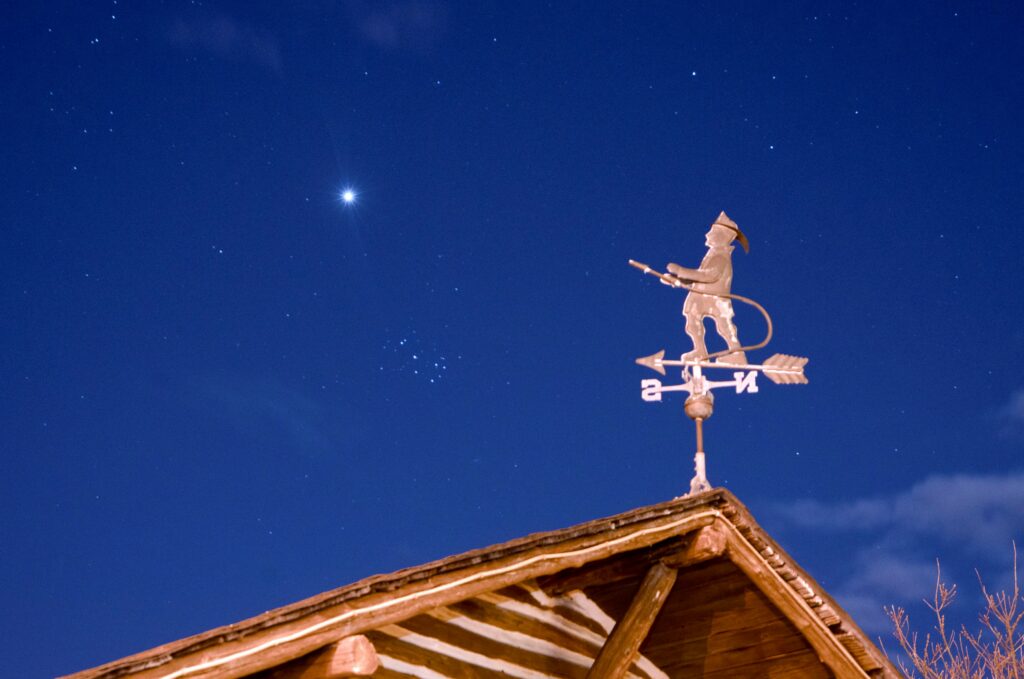
Steve Jasiecki/On April 7, the fireman on the Margate Log Cabin weather vane points to the planet Venus, while the wind directional arrow points to the Pleiades.
By STEVE JASIECKI
Being stuck at home and not being able to go out is leaving people with cabin fever. However, there is a way to explore the universe and you don’t even need to leave your neighborhood. We can take this time to do a little backyard stargazing and observe the wonders of our solar system.
If you go outside just after sunset and look high in the western sky, you will see a very prominent point of light shining brilliantly in the sky. That point of light is the planet Venus.
Venus is very easy to spot. It is the third brightest celestial object in the sky just after the sun and the moon. It is the first “star” to be seen just after the sun sets. In fact, it is so bright, it can sometimes be seen in the daylight if you know where to look.
Often called the “Evening Star” or the “Morning Star,” Venus is not a star at all, it’s a planet. While stars remain in fixed patterns in the sky, planets move among them visiting different constellations as they make their journey around the sun. These next few weeks you will be able to track Venus’s movements as it wanders through the constellation Taurus.
On March 24, Venus reached its greatest elongation from the sun, meaning it was at a 45-degree angle to that of the Earth and sun. If viewed from above the solar system, the sun, Earth and Venus would form a right triangle.
The planet’s orbit is now bringing it closer to earth, getting larger and brighter as it approaches. If you are able to observe it through a telescope, you will see that it is going through phases like the moon.
On April 3, Venus passed the Pleiades, the close star cluster located in the shoulder of the constellation Taurus, the Bull. It is currently moving east and is passing north of the Hyades, the v-shaped cluster that makes up the bull’s face.
On April 28, Venus will achieve its greatest brilliancy. Although it is still getting closer to Earth, the planets reflective surface is becoming a thinner crescent.
Venus is still moving east of Taurus until May, when its east-to-west motion appears to stop and then reverses itself, a progression known as retrograde motion. Venus will now start to move west to east as seen against the background of stars.
By the end of May, Venus will be making it’s plunge towards the horizon and soon disappear into the sun’s glare and from our view in the evening sky.
On June 3, the planet will reach inferior conjunction, the term used when a planet is directly between the sun and Earth. A few days later, it will emerge in the morning sky and can be dutifully called the Morning Star.
It can be very interesting to track the way planets move among the stars. Taking the time to observe some of the subtler things in life, something our ancestors knew well, will give us a greater appreciation for the world in which we live.
Steve Jasiecki is chairman of Sustainable Margate


